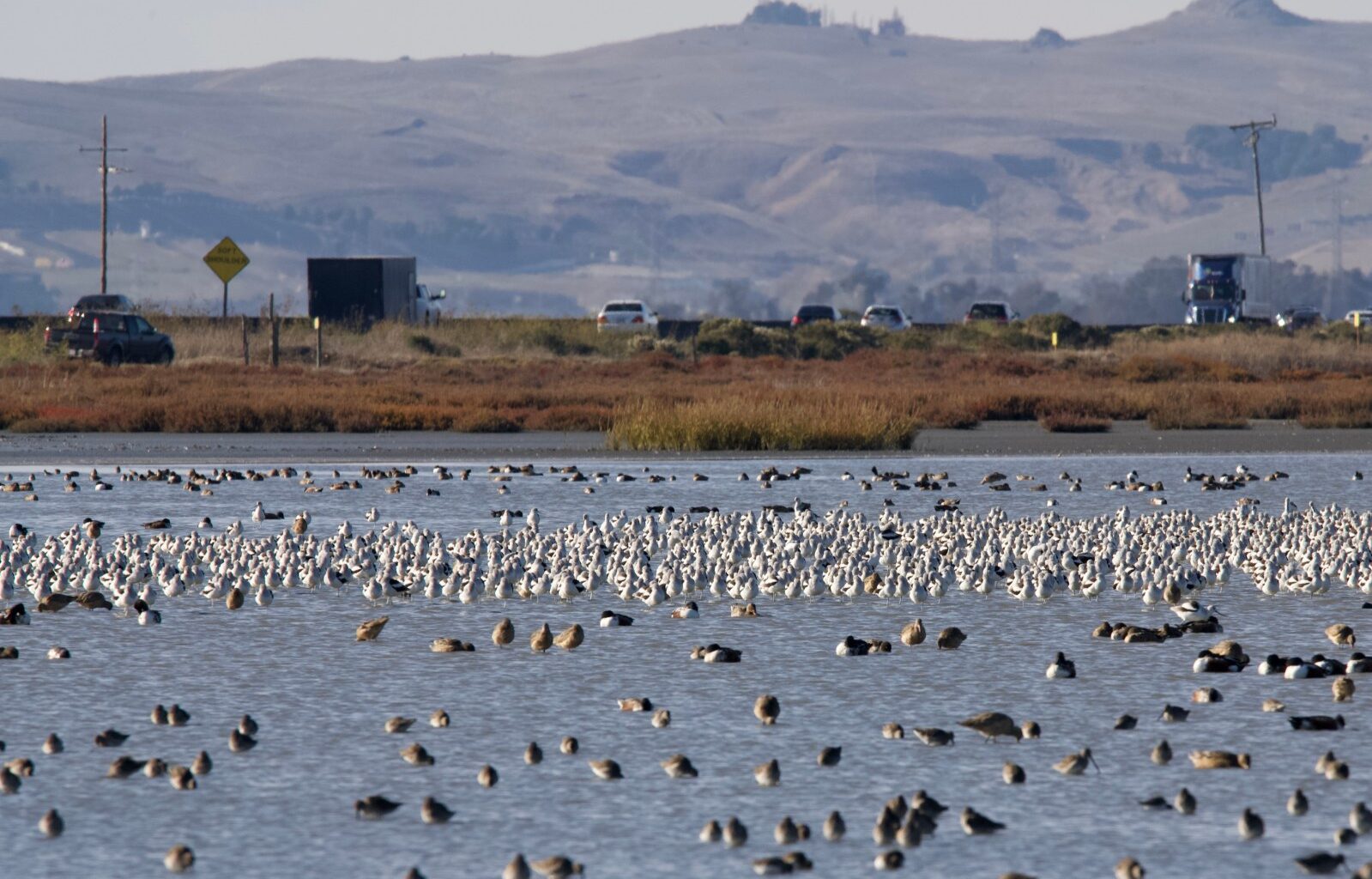I recently fell in love with the worst commute I’ve ever had. I also still hate it, of course, but while rolling at a glacial pace toward the State Route 37 onramp at Mare Island, heading from my home in Solano County to my job in Sonoma County, I saw an attempted murder—by an osprey.
A battle-cry of a screech was issued above my car. I looked up to see a flurry of talons and feathers over a telephone pole. A crow tumbled from the fracas, croaking away, while the osprey settled on the pole, ruffled its feathers, and began preening.
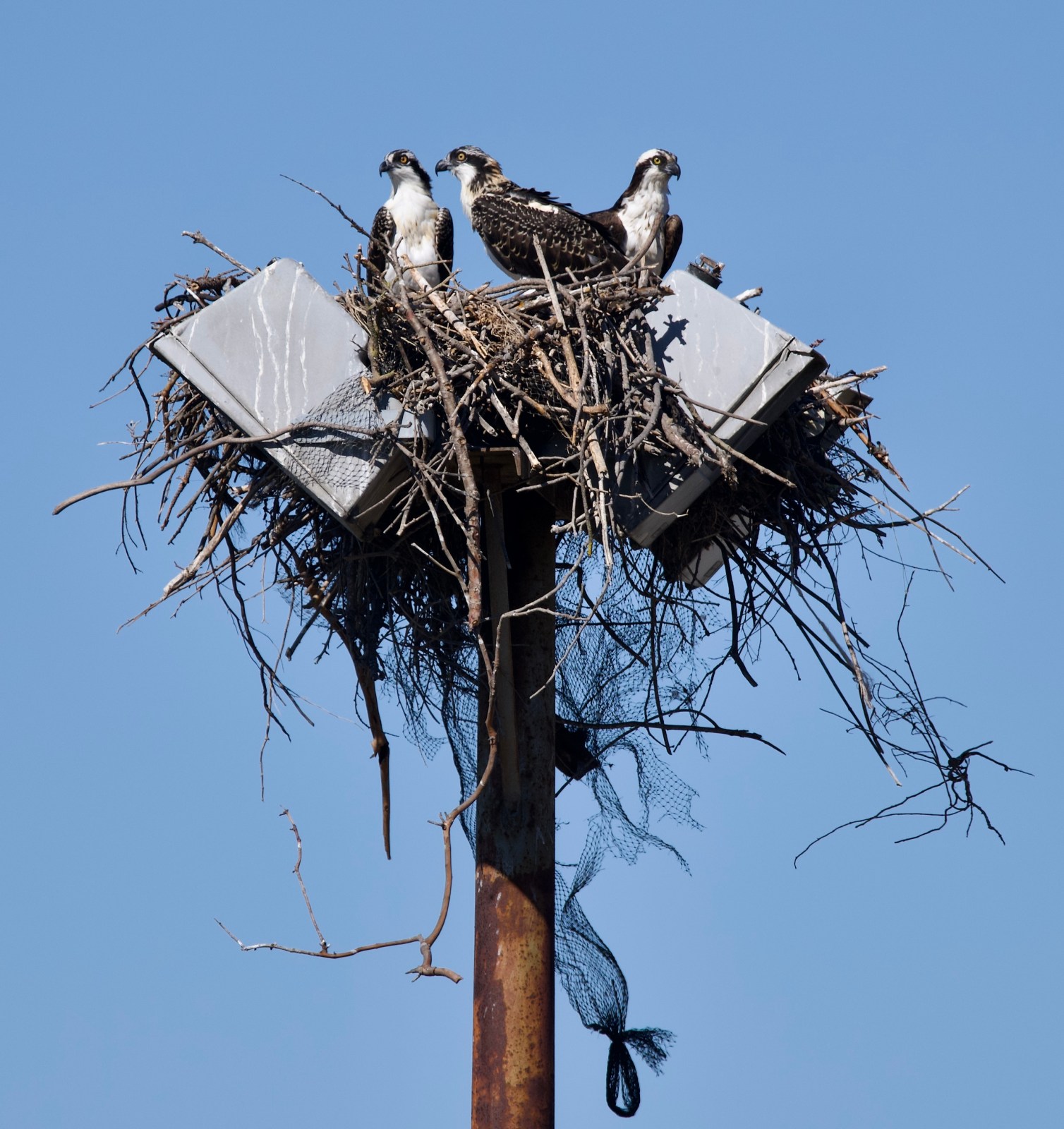 Ospreys were once a rare sight in the Bay Area, but in the past few decades they’ve set up shop in the area. Mare Island is a hotspot. (Kyle Gerner)
Ospreys were once a rare sight in the Bay Area, but in the past few decades they’ve set up shop in the area. Mare Island is a hotspot. (Kyle Gerner)
Immediately, my mind sprang alive on a drive that normally numbed it—a drive so consistently sluggish that local radio stations no longer mention it in traffic reports. Are ospreys common here? Why was this crow attacked? I momentarily contained my excitement to inch my car forward in the onramp’s heated merge contest, then returned my gaze upward. A rounded security camera was angled toward an enormous nest. What else had I been missing on all these drives?
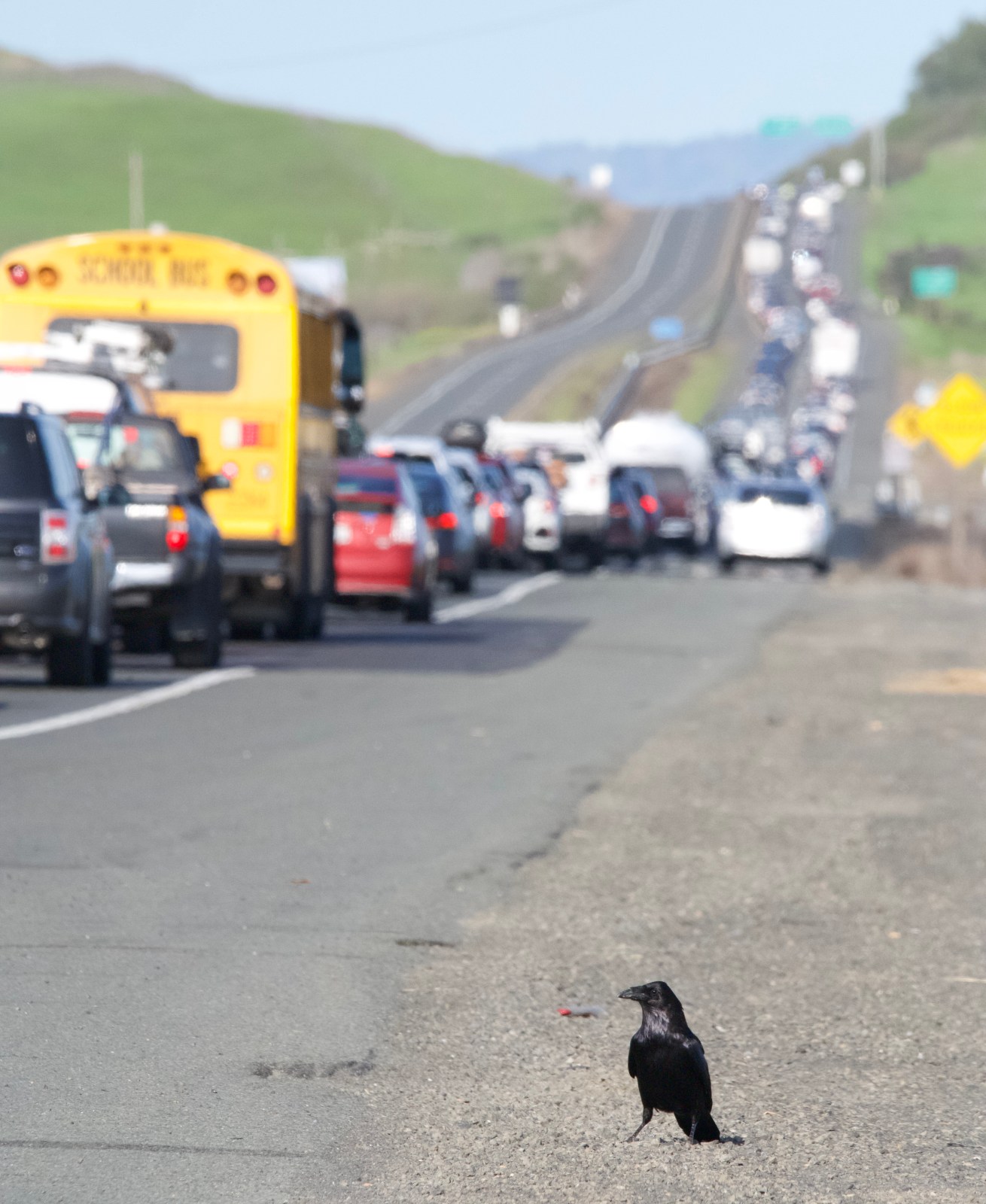 A raven with highway business. (Kyle Gerner)
A raven with highway business. (Kyle Gerner)
On my way home that day, back in traffic, I pondered my morning bird experience. Why is the osprey nest being watched? I thought nest cams were reserved for fancier birds, like bald eagles or California condors. Maybe there was something worth paying attention to here. In the days after the osprey attack, I find myself noticing the birds around me as I crawl eastward toward my Solano County home—and I’m taken aback by the abundance and diversity of life.
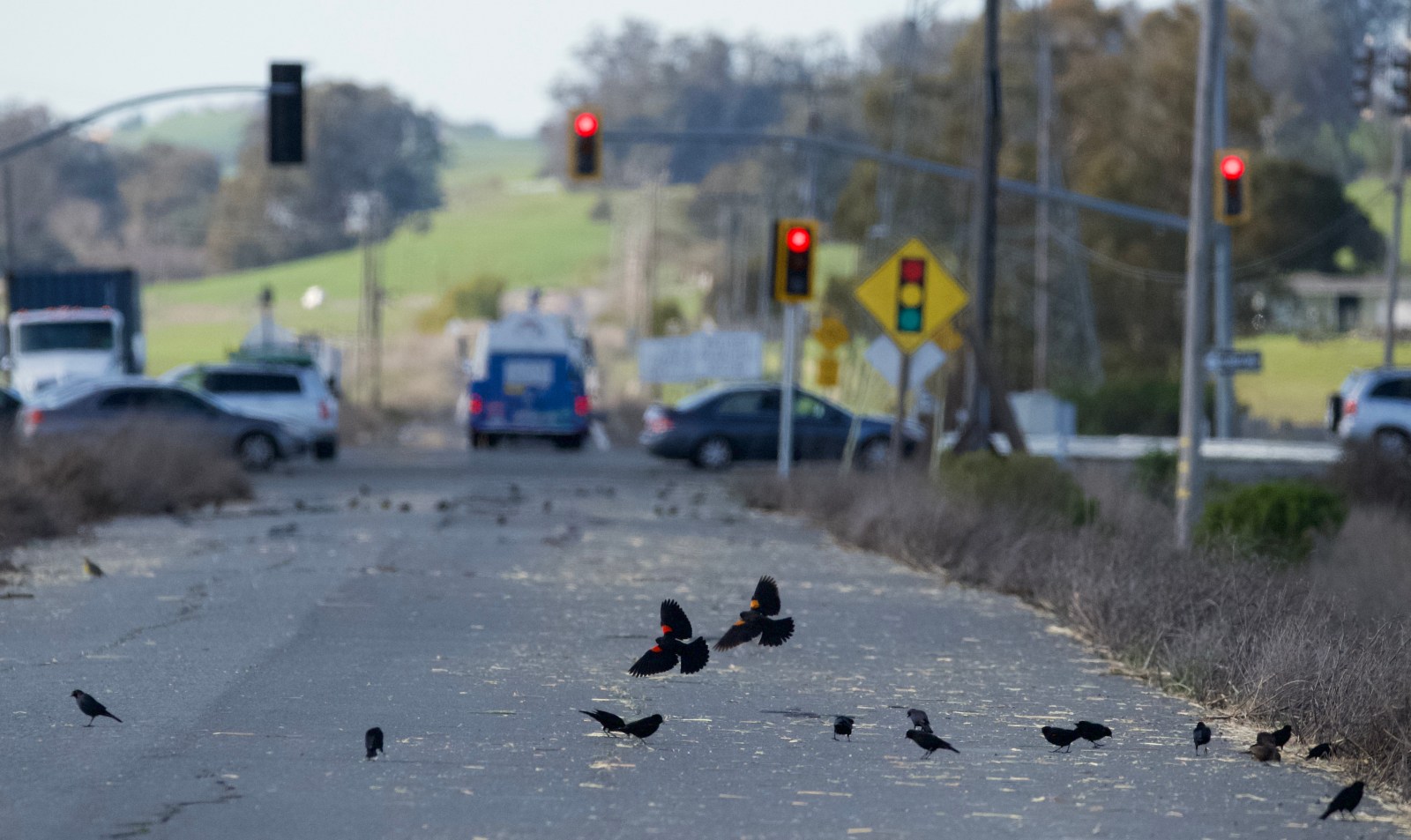 Brewer’s and red-winged blackbirds mingle near the Lakeville interchange, on the western end of State Route 37. (Kyle Gerner)
Brewer’s and red-winged blackbirds mingle near the Lakeville interchange, on the western end of State Route 37. (Kyle Gerner)
Black-necked stilts, marbled godwits, sandpipers, dowitchers, and at least one whimbrel settle at White Slough in Vallejo. (Kyle Gerner)
For there are birds absolutely everywhere. Feeding, flying, frolicking, fornicating. I’m stopped in traffic, watching my own personal David Attenborough documentary. Two ducks—not sure what kind—are sloppily trying to mate in front of a row of idling cars. A northern harrier swoops in front of them, battling the wind as it stalks the berm for rodents. A brush rabbit darts into its den, and the harrier rolls its eyes and glides business-like over the highway to scour the berm on the westbound side of the road. Shorebirds of all shapes and sizes wade through the mudflats, gorging themselves as long as the low tide will let them. As they flutter in flocks around the ponds, their white bellies occasionally catch the afternoon sun behind me, sparkling like tiny migratory disco balls.
At the same time, I start noticing hundreds of other birds rising and falling, zipping around in unison. Some will stay off the ground longer than others, but every time they alight I feel something heavy drop to the bottom of my stomach. There is something about these dense flocks that gives me tunnel vision, makes me forget whatever else I thought was important to think about. Their chaotic abundance of activity fully occupies my mind, muting all thoughts about work stress, upcoming oral surgeries, family disagreements, rent. It’s one of the casually delightful ways that nature can make me feel tiny, when just another day of its powerful, underappreciated resilience reminds me of my true place in the cosmos. In winter, I have gone out of my way to visit wetlands in the Sacramento and San Joaquin valleys just to hear migratory geese honk overhead en masse, and silence those inner voices. I’m now realizing I can microdose this feeling on commute days. Ah, now I’ve got two car lengths in front of me to make up.
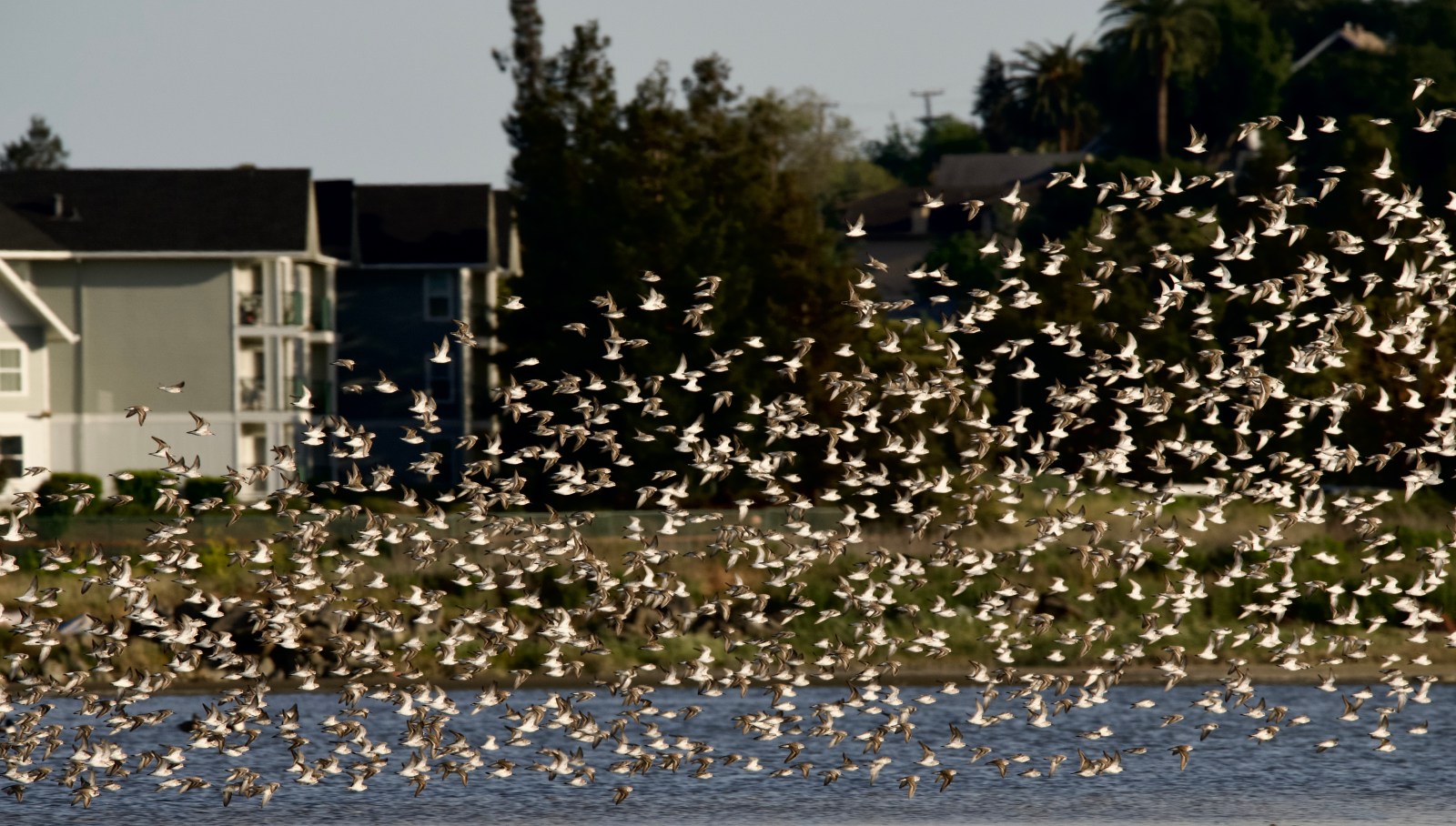 Sandpipers take off. White Slough in Vallejo is part of the Napa Marsh, which is considered a Globally Important Bird Area by the American Bird Conservancy. (Kyle Gerner)
Sandpipers take off. White Slough in Vallejo is part of the Napa Marsh, which is considered a Globally Important Bird Area by the American Bird Conservancy. (Kyle Gerner)
For the rest of the spring and summer, I pack my camera and stay alert as I make like a snail across the marshes, hills, and pasturelands to and from the office. The osprey nest gets busy, with two more small beaks to feed, and I’ve discovered several other bustling nests nearby as well. I know exactly how many days various chicks have been able to fly, which adults are mated pairs, and which species nest when. I feel tightly bonded to this thriving community of birds, mammals, cars, vineyards, and power lines. When I get home, I tell my partner what I’ve noticed while “making the rounds.” , and as I’ve pulled over to take photos I’ve gotten to talk to folks and share my excitement with them. Perhaps the most remarkable thing: I now look forward to my commute.
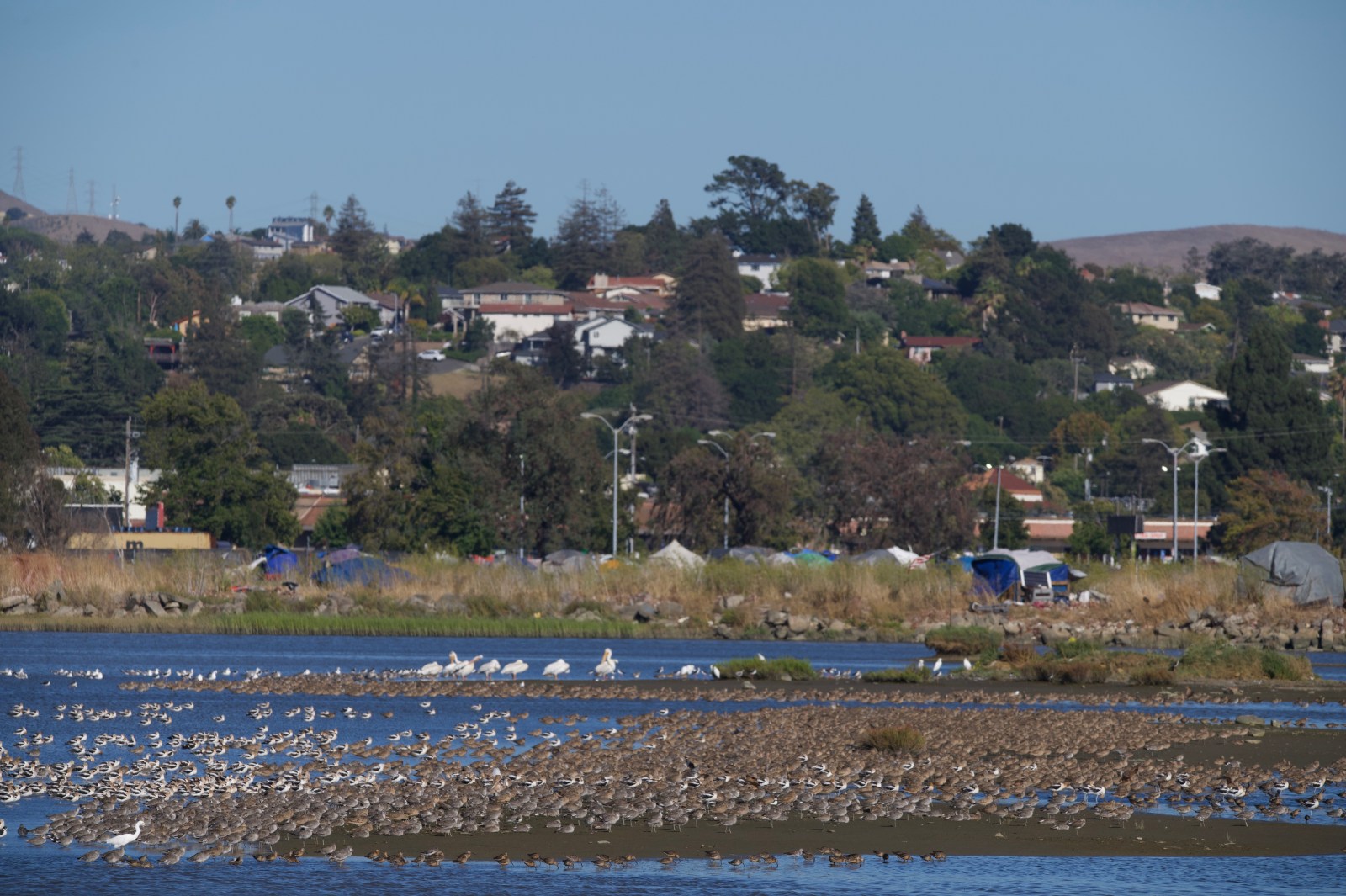 Birds and humans alike shelter around White Slough in Vallejo. (Kyle Gerner)
Birds and humans alike shelter around White Slough in Vallejo. (Kyle Gerner)
And I know I’m idling past people who are driving farther and longer—just as I’ve done—to pay admission to a crowded park so they can get their nature fix. Popular parks are often the first places people associate with conservation success, but what about the habitats we commute through every day? In this area, heron populations were once decimated by the millinery trade, and numerous waterfowl species experienced overhunting, osprey had a very minimal presence. Yet every nest and fledgling I see is a reminder of how well humans and wildlife have adapted amidst the challenges of coexisting in the 21st century, and a testament to the years and millions of dollars that have been spent restoring these baylands.
I can go to Yosemite and admire Half Dome for a day, but now it would take the discovery of a new osprey nest on a telephone pole in Vallejo to truly inspire me. Why aren’t nature-lovers arriving at Vallejo’s commuter corridors in droves? I think it’s time for us to embrace the Anthropocene like a Mare Island osprey.
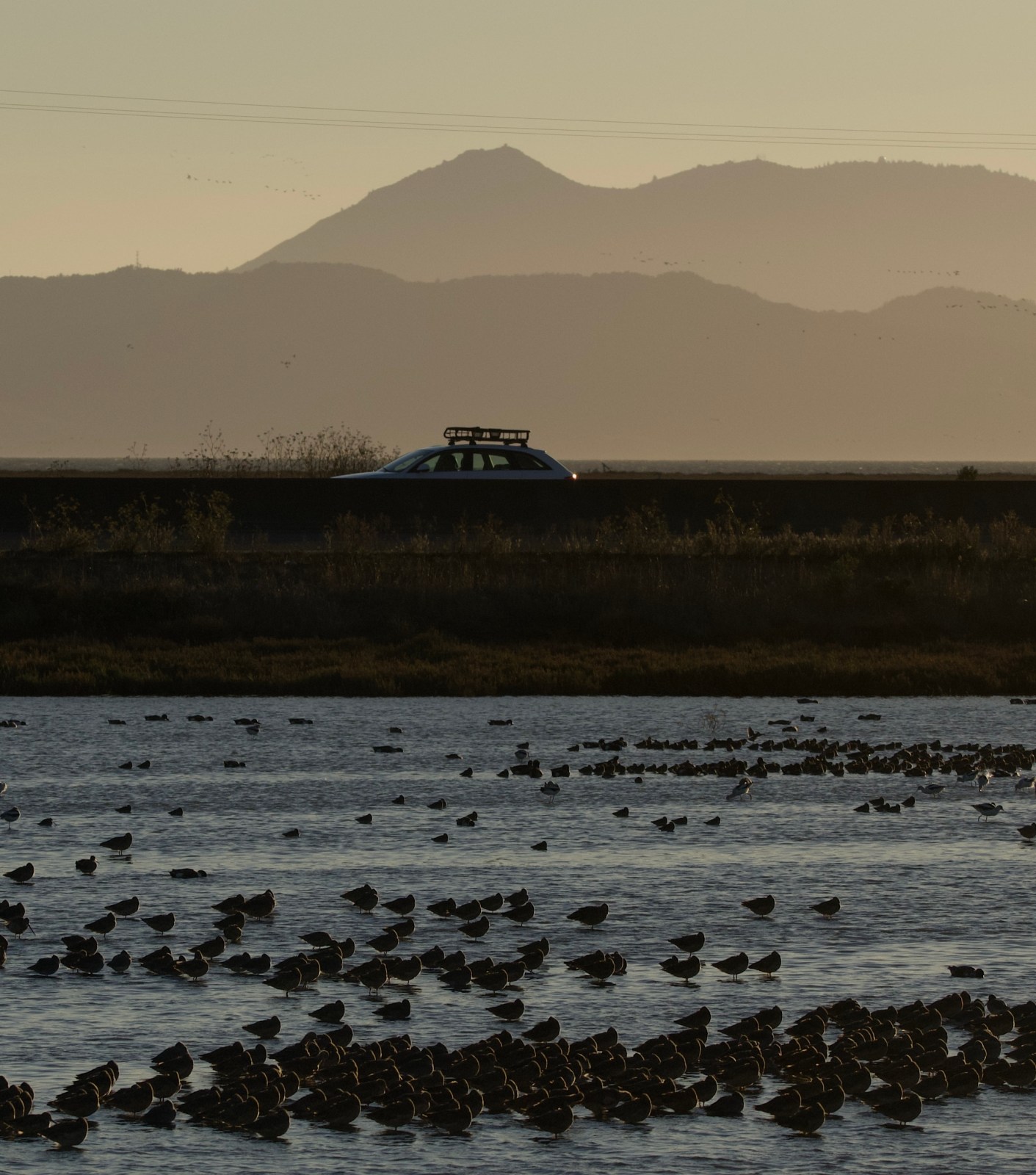 Shorebirds settle in on a September evening at Cullinan Ranch, with Mount Tamalpais in the background. (Kyle Gerner)
Shorebirds settle in on a September evening at Cullinan Ranch, with Mount Tamalpais in the background. (Kyle Gerner)

